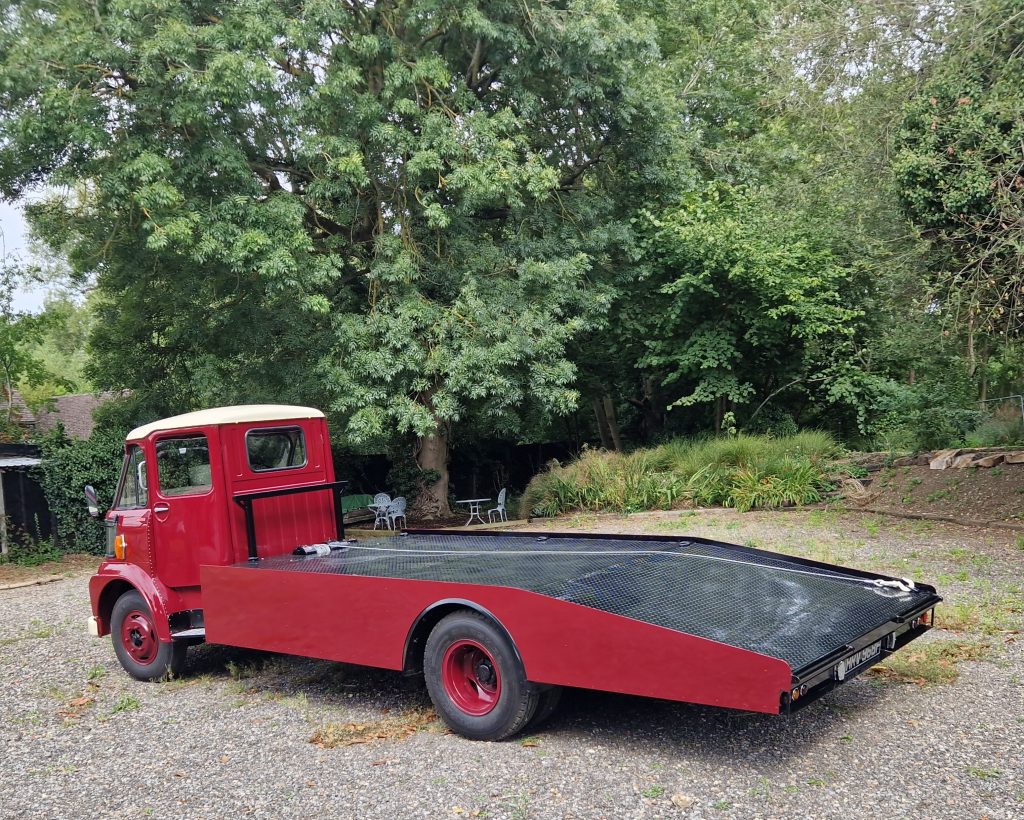Four years into his restoration of this 1968 Austin FG, Andy Harris was ready to give up. But his friends in the “Threepenny Bit Friday” club weren’t going to let that happen, as Peter Simpson explains.
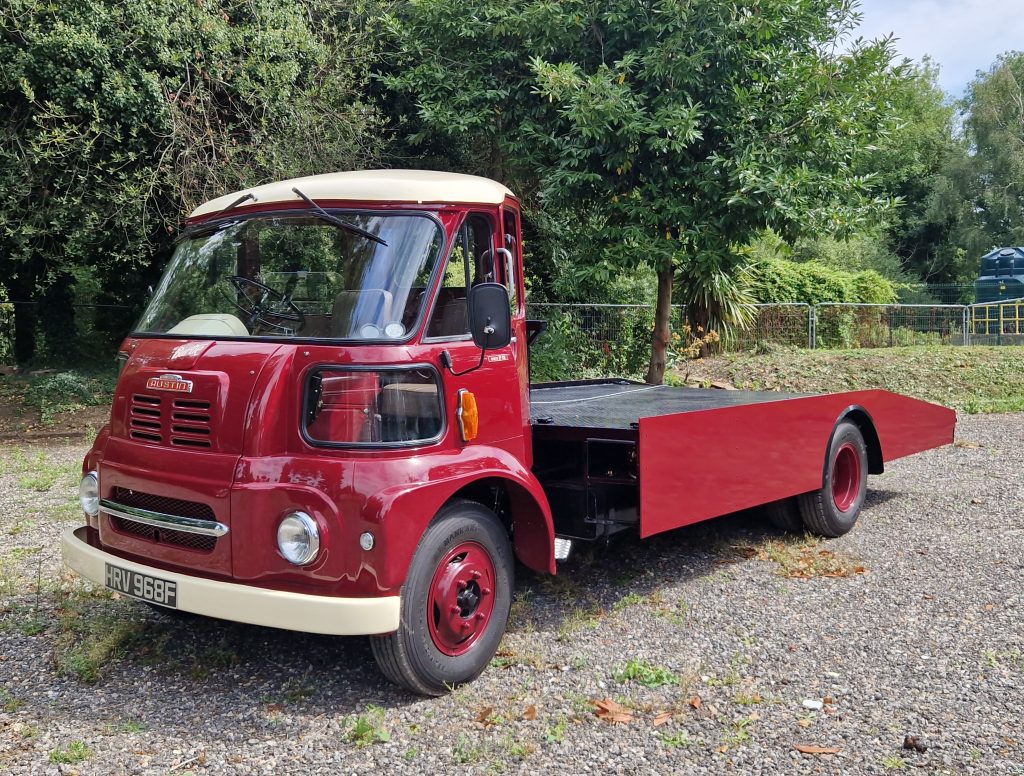
Back in the day, people wanting something cheap to move one or two vehicles would often choose a BMC ‘threepenny bit’ FG chassis/cab. Thanks to the Post Office and public utilities making wide use of the FG, they were readily available and cheap. Especially if you bought one that had been diesel powered from a specialist dealer who had bought it purely for its engine.
Back then, the rules on what you could and could not do with vehicles like this were less stringent than today. There were no tachographs of course. ‘Recovery vehicles’ were also MoT exempt, and until 1988 could also be operated on trade plates. What, however, defined a breakdown vehicle was sometimes interpreted quite broadly. I recall one Hastings area main dealer in the 1970s operating its parts-chaser Mk1 Cortina estate on trade plates. I’m sure that wasn’t legal even then.
Tatty FG, tidy FG
But back to FG transporters, the standard of presentation varied enormously. For some, all that mattered was that the lorry moved and stopped. But some owners took a real pride in the condition and presentation of their vehicle.
The latter was the approach taken by Andy Harris.
Now aged 62, Andy has lived around the Staines area of south-west London his entire life and spent pretty-much all that time on the spanners. He initially worked for London Country Buses, but set up on his own when made redundant in 1989. He has been a self-employed car and light commercial mechanic ever since.
Andy has, it would be fair to say, something of a ‘knack’ for acquiring things which may or may not be useful in future. Indeed, during out photoshoot, a friend turned up and from his van took out an glassfibre figure of the Grim Reaper. This, apparently, was surplus to requirements from nearby Shepperton Film Studios. Said friend thought Andy would like it. Andy said it was going in the garden, his partner Marlene said that it was not. As far as we know,this has yet to be resolved.
Two become one
One good FG from two…
Anyway, seven or eight years ago, Andy was offered a milk float and a petrol-powered FG horse box for £350. The milk float was sold immediately for £350. The FG however, had been standing for 18 years and was very, very rusty. It was, however, very good mechanically having covered just 44,000 miles from new. So though clearly beyond restoration, the 1971 horsebox certainly had great potential as a greasy-bits parts donor in a ‘two become one project.
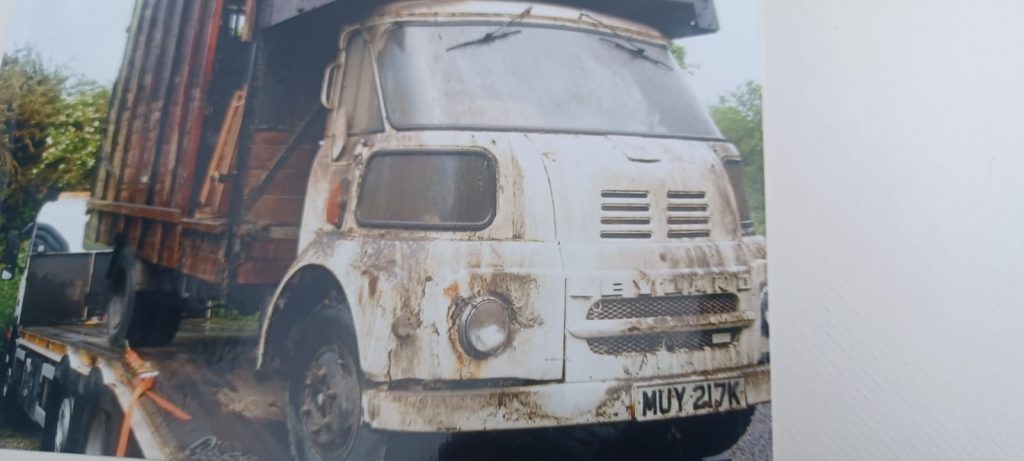
However, he needed another basis for restoration. He bought this in the form of a 1967 chassis-cab which he found in Papworth, Cambridgeshire. This had been diesel powered, but was now without an engine. Its history is unknown, other than that it was registered for ‘Showmans Goods’ at the time of purchase.
Andy refurbished the 1967 chassis; this was basically solid and he needed to do only localised repairs plus cleaning up and painting. He overhauled the suspension, fitting new pins and bushes throughout. The braking system was also refurnished from front to rear. Brake parts are generally available, though knowing a few part numbers helps. A lot of stuff was also used on other BMC/BL products and is listed under its more popular applications. Ebay was, of course, a common source of mechanical stuff. The secret to success here is, according to Andy, “paying more than anyone else.”
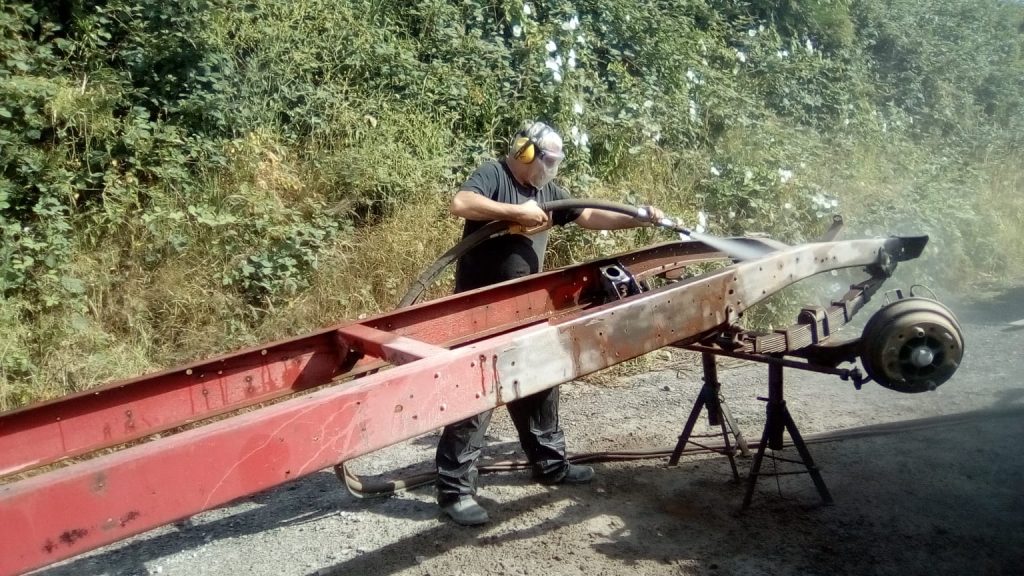
FG Panels
Though the 1967 cab was a much better prospect for restoration, it was still far from good. and As is so often the case, closer examination revealed many places which had looked good were in fact plated over. In particular, the inner wheelarches were pretty-much non-existent, and a new floor was required. Replacement panels for FGs are ‘somewhat scarce’ so local contact “Geoff at GC Engineering” made replacements for these. Localised repairs were also needed and a Newcastle-based enthusiast with a scrap cab cut a few sections out for reuse. Few, if any, parts came from the horsebox cab.
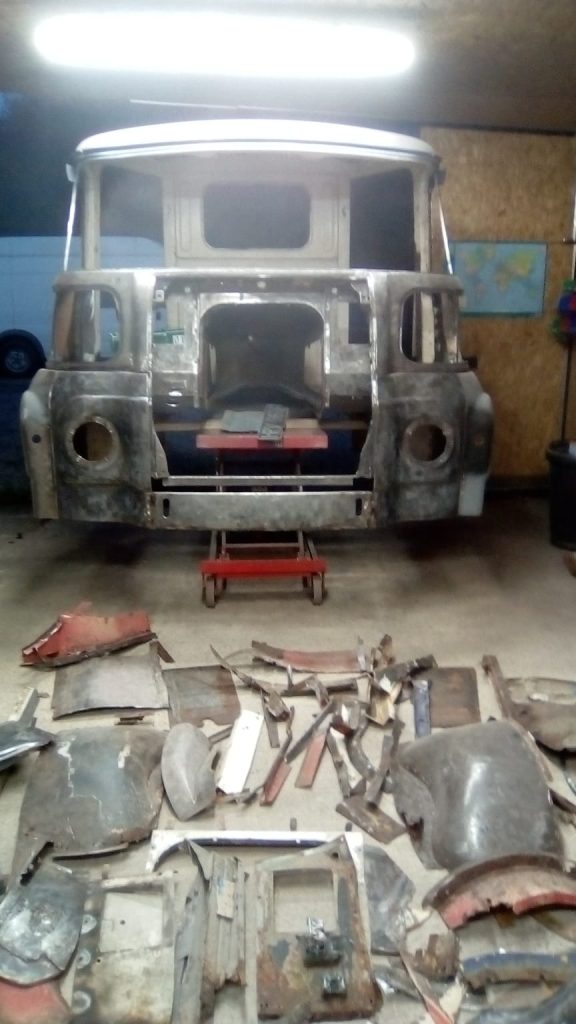
Andy gets the Hump
About four years into the project, and as Andy started work on the cab, the enormity of the task dawned on him. In Andy’s own words, “I got the hump.” Fortunately, help was at hand in the shape of a number of retired and semi-retired friends. These, like Andy, had been stock car racers back in the day. Gradually, these friends, most of whom have specific skills, started helping Andy out with particular jobs. In time, the “Friday Club” started having “Threepenny Bit Friday” working sessions, and Andy is keen to acknowledge the help he has had from everyone including John ‘Chevvy’ Shields, Geoff, Jeff, ‘Daddy G’, Mark, Kevin, Larry at LJS Enamellers, Vince the electrician and last but certainly not least the late Colin who was a highly skilled engineer and did a lot of work on the lorry prior to his passing in 2023.
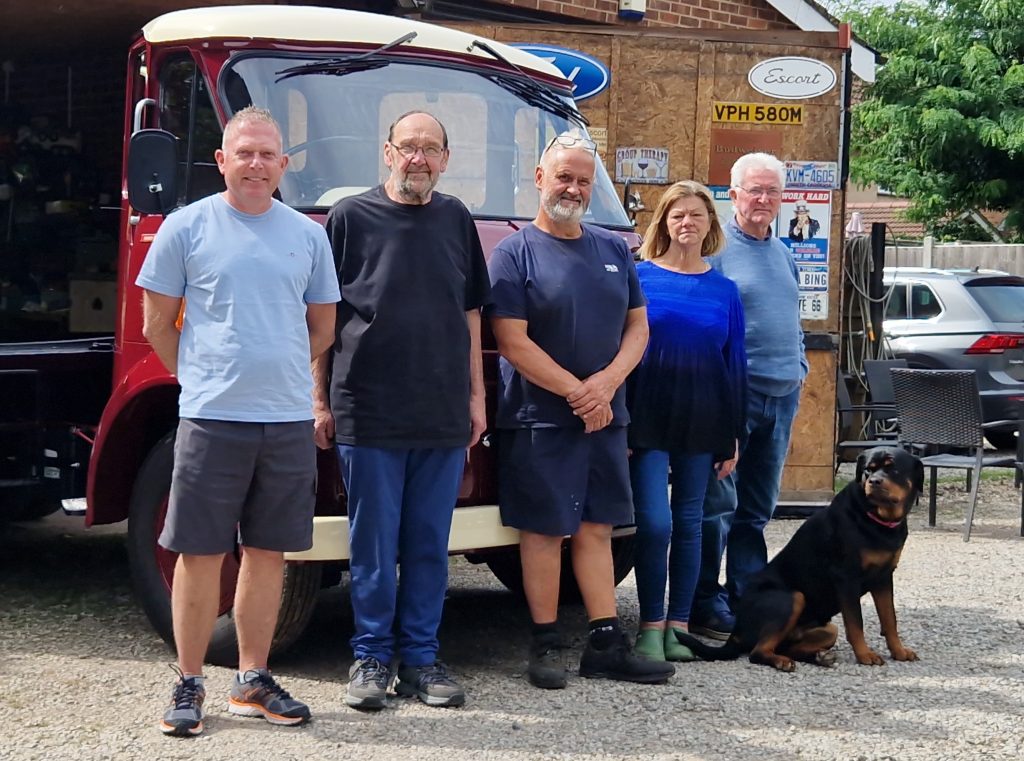
Work on welding the cab was very much a team-effort. Preparation for painting was then undertaken by “Mark and Kevin” while “Larry” painted it.
FG Bodybuilders
The body was also a combined effort by the group; with their stock car racing background they were all very experienced at making bespoke car transporter bodies, and it was a case of building it to fit the existing chassis. Ex racer Mick Collard supplied the winch. We should probably mention here that the FG’s gross laden weight is 5.5tonnes, meaning that in contrast to some of the ‘Transit-based’ vehicles one sometimes sees out and about, this is more than capable of carrying a full-size car. “Ken from Essex” (who, apparently, uses a six-cylinder FG daily) supplied a bespoke stainless steel exhaust…
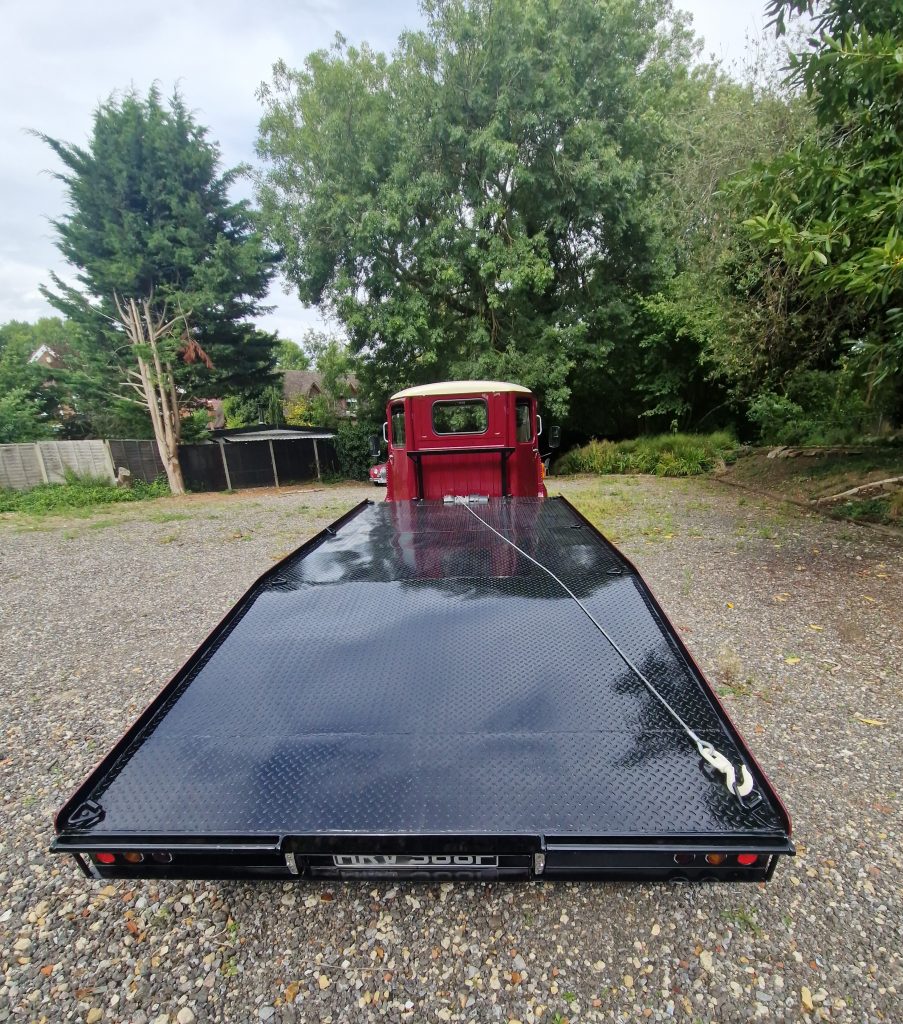
Low mileage mechanicals
Low mileage FG mechanicals
The horse box’s main contribution to this project was the low-mileage engine, gearbox and back axle. These needed little beyond cleaning, servicing and repainting. As you can see, the engine in particular now looks absolutely superb in original BMC green. Much material from the horsebox cab was also reused. This includes, remarkably, the seats and seat covers which look like new but are actually the originals cleaned up. The instruments, including the speedometer showing 44,000 miles, also came from the horsebox, though John and Andy fitted a new headlining.
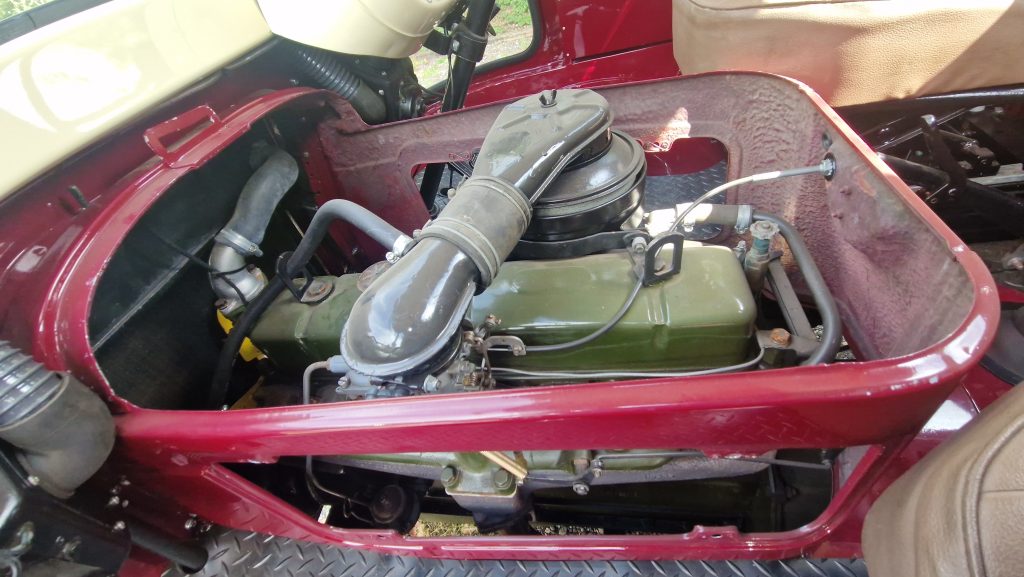
On the electricial side Vincent, s the group’s “resident electrician” repaired the existing loom as required and adapted it to alternator charging. He also, in the interests of safety, upped the fuse-count somewhat from the original two. New tyres came from Discount Tyres and wheels of Egham, and Andy was able to choose the best seven wheels (six plus a spare) from the twelve that were to hand.
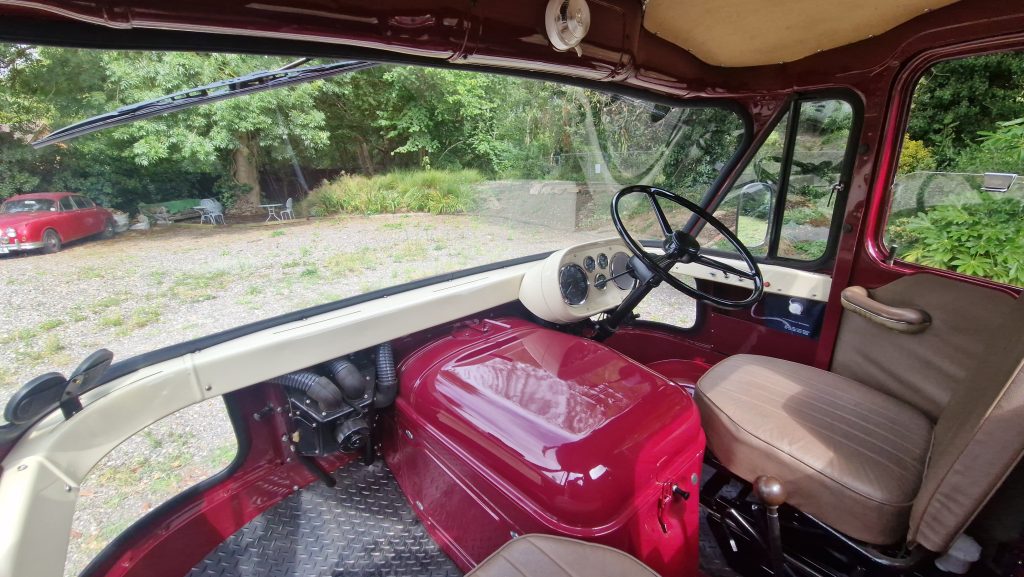
Seven years after it started work was finally completed, and the FG’s first trip out was to the nearby Wraysbury Show. Further show appearances are planned for 2025, though Andy and the rest of the ‘gang’ prefer to support smaller local events which include all types of old vehicle than the major national and lorry-only shows.
And of course because it’s a car transporter, the FG provides an ideal means of getting two vehicles to a show with just the one driver!
To read more articles like this every month, subscribe to Classic & Vintage Commercials magazine by subscribing here. And find the latest news, exclusive looks and more at the CVC website here.
